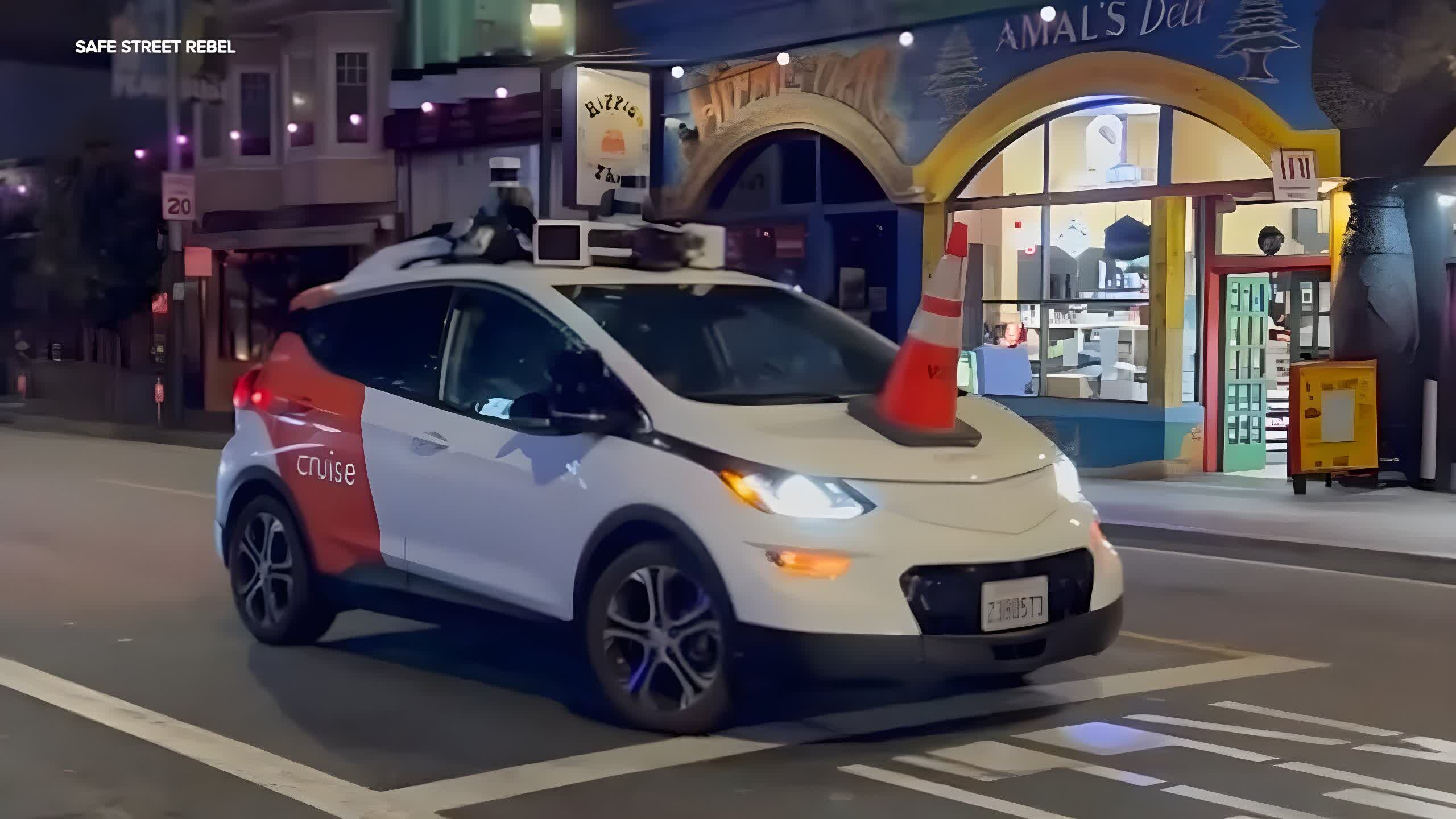A group called Safe Streets Rebel has found a new way to protest against driverless vehicles owned by Waymo and Cruise in San Francisco. They place traffic cones on the hoods of these vehicles to disable them temporarily. The group is upset because these autonomous vehicles have been involved in incidents such as crashing into a bus and running over a dog. City officials have reported ninety incidents involving Waymo and Cruise vehicles since January.
Safe Streets Rebel is also angry about an upcoming decision by the California public utilities commission, which will determine whether autonomous vehicle companies can increase the number of vehicles they operate in San Francisco and extend the hours of operation for Robotaxis from the middle of the night to 24/7.
A video that has gained nearly 5 million views on Twitter raises concerns about autonomous vehicles (AVs) causing traffic congestion by blocking buses, emergency vehicles, and regular traffic. The video also alleges that AV companies collaborate with the police to record people without their consent constantly. Furthermore, it claims that AVs require streets designed primarily for cars, neglecting the needs of pedestrians and public transportation.
The video suggests a method to disable one of these AVs: by placing a traffic cone on its hood. The group behind the video states that traffic cones are easily accessible everywhere. However, they emphasize that this action should only be taken if the vehicle is unoccupied. The group is encouraging people to participate in a protest against AV companies and an upcoming vote by disabling one of these cars.

“It’s a fantastic moment,” exclaimed one of the organizers. “We’re not causing any harm to anyone’s property, and any potential damage is easily fixable. However, it’s a clever and impactful strategy that has truly resonated with people.”
Autonomous Vehicles and the Cone Protest
Waymo, on the other hand, expressed less enthusiasm for the protest. A spokesperson criticized the cone demonstration, stating that it demonstrates a lack of understanding about the functioning of autonomous vehicles. They considered it an act of vandalism that promotes unsafe and disrespectful behavior on the roadways. Waymo also emphasized that they would involve the police if they catch anyone interfering with their fleet of robotaxis.
In contrast, Cruise highlighted that their vehicles have never been involved in a single fatal accident or caused any serious injuries, despite accumulating 3 million miles on San Francisco streets. According to a report from KRON4, city officials have voiced concerns that the protest could result in additional traffic congestion since disabled autonomous vehicles would require technical experts to reset them.
Waymo expressed less enthusiasm about the protest, stating that it demonstrated a lack of understanding about how autonomous vehicles function and considered it vandalism and an endorsement of unsafe and disrespectful road behavior. Waymo also declared that it would notify the police if anyone were caught interfering with its fleet of self-driving taxis.
On the other hand, Cruise highlighted that its vehicles had never been involved in a fatal accident or caused any serious injuries, despite accumulating 3 million miles on San Francisco streets.
The Motivation behind the Protest: Safe Streets Rebel’s Concerns and Goals
According to a report from KRON4, city officials expressed concerns that the protest could lead to increased congestion, as turning off an autonomous vehicle would require technical experts to reset it.
The organizer of the protest informed The Guardian that it was one of several actions undertaken by the group Safe Streets Rebel, as they aim to reduce the number of cars on city streets, secure more funding for public transportation, and ensure the safety of pedestrians and cyclists. The group argues that autonomous vehicles pose numerous risks to safety and the environment, despite being marketed as alternatives to traditional cars.
The organizer said, “They still require wide roads, tire wear, and they have cameras everywhere. “It’s not just about ‘are they safer than a human driver?’ We want healthy cities that don’t require these high-tech surveillance pods moving around.”











